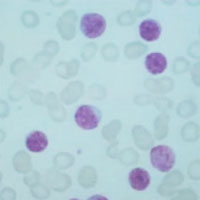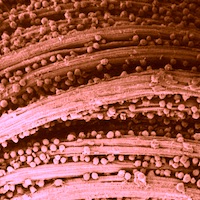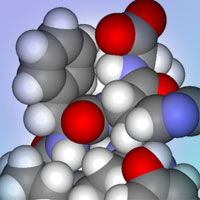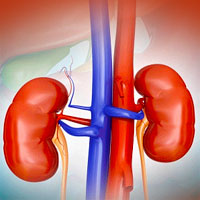Tag: septic shock

Platelets and Multi-Organ Failure in Sepsis
Platelets have received increasing attention for their role in the pathophysiology of infectious disease, inflammation, and immunity. In sepsis, a low platelet count is a well-known biomarker for disease severity and more... read more

A Better Way to Detect Sepsis in Kids in the ED
We have been interested in this question for a long time here at CHOP and have done several interventions over the past several years to try to improve our ability to recognize children with septic shock. When we started... read more

Cellular Immunotherapy for Septic Shock
The infusion of freshly cultured allogenic bone marrow derived MSCs into participants with septic shock up to a dose of 3 million cells per kg (250 million cells) appears safe. Ages of participants in the interventional versus... read more

Sepsis National Hospital Inpatient Quality Measure
The Center for Medicare and Medicaid Services adopted the Early Management Bundle, Severe Sepsis/Septic Shock (SEP-1) performance measure to the Hospital Inpatient Quality Reporting Program in July 2015 to help address the... read more

Septic shock with no diagnosis at 24 hours: a pragmatic multicenter prospective cohort study
The lack of a patent source of infection after 24 hours of management of shock considered septic is a common and disturbing scenario. A multicenter observational cohort study in ten intensive care units (ICU) in France.... read more

Restricting volumes of resuscitation fluid in adults with septic shock after initial management
A protocol restricting resuscitation fluid successfully reduced volumes of resuscitation fluid compared with a standard care protocol in adult ICU patients with septic shock.... read more

Noninvasive Ventilation in Patients With Hematologic Malignancy
Two-thirds of patients with Hematologic Malignancy and respiratory failure failed Noninvasive Ventilation (NIV) and required endotracheal intubation, and had high subsequent mortality. Patients who failed NIV had higher Paco2,... read more

The Lactate Dilemma
After a long and exhausting discussion with an inferior human being, a cardiologist, which happens to be an old friend, I decided to write some thoughts about lactate. So, I'll do like I do in my lectures, which is state... read more

Selepressin – An Effective Substitute for Norepinephrine
Selepressin, a novel selective vasopressin V1A agonist, is an effective substitute for norepinephrine in a phase IIa randomized, placebo-controlled trial in septic shock patients. Vasopressin is widely used for vasopressor... read more

Muscle Oxygenation as Indicator of Shock Severity
The aim of this pilot study was to evaluate the potential of a new noninvasive optical measurement of muscle oxygenation (MOx) to identify shock severity in patients with suspected sepsis. We demonstrate that noninvasive... read more

Effects of Polymyxin B Hemoperfusion on Mortality in Patients With Severe Sepsis and Septic Shock
Several studies have reported a survival benefit for polymyxin B hemoperfusion treatment in patients with severe sepsis and septic shock. However, recently, a propensity-matched analysis and a randomized controlled trial... read more

Clinical Experience With IV Angiotensin II Administration
Angiotensin II is an endogenous hormone with vasopressor and endocrine activities. This is a systematic review of the safety of IV angiotensin II. Adverse events associated with angiotensin II were infrequent; however, exacerbation... read more

Optimal Timing of RRT in Patients with AKI in the Context of Sepsis
Among 620 patients enrolled in AKIKI, 494 (80%) had sepsis and 413 (67%) septic shock. This can help to suggest recommendations in septic patients with AKI. AKIKI showed no significant difference in mortality between early... read more

Detecting impaired myocardial relaxation in sepsis with a novel tissue Doppler parameter
Left ventricular diastolic dysfunction is associated with mortality outcomes in severe sepsis and septic shock. There are ongoing issues with diagnosing diastolic dysfunction in this cohort, partly owing to the poor applicability... read more








